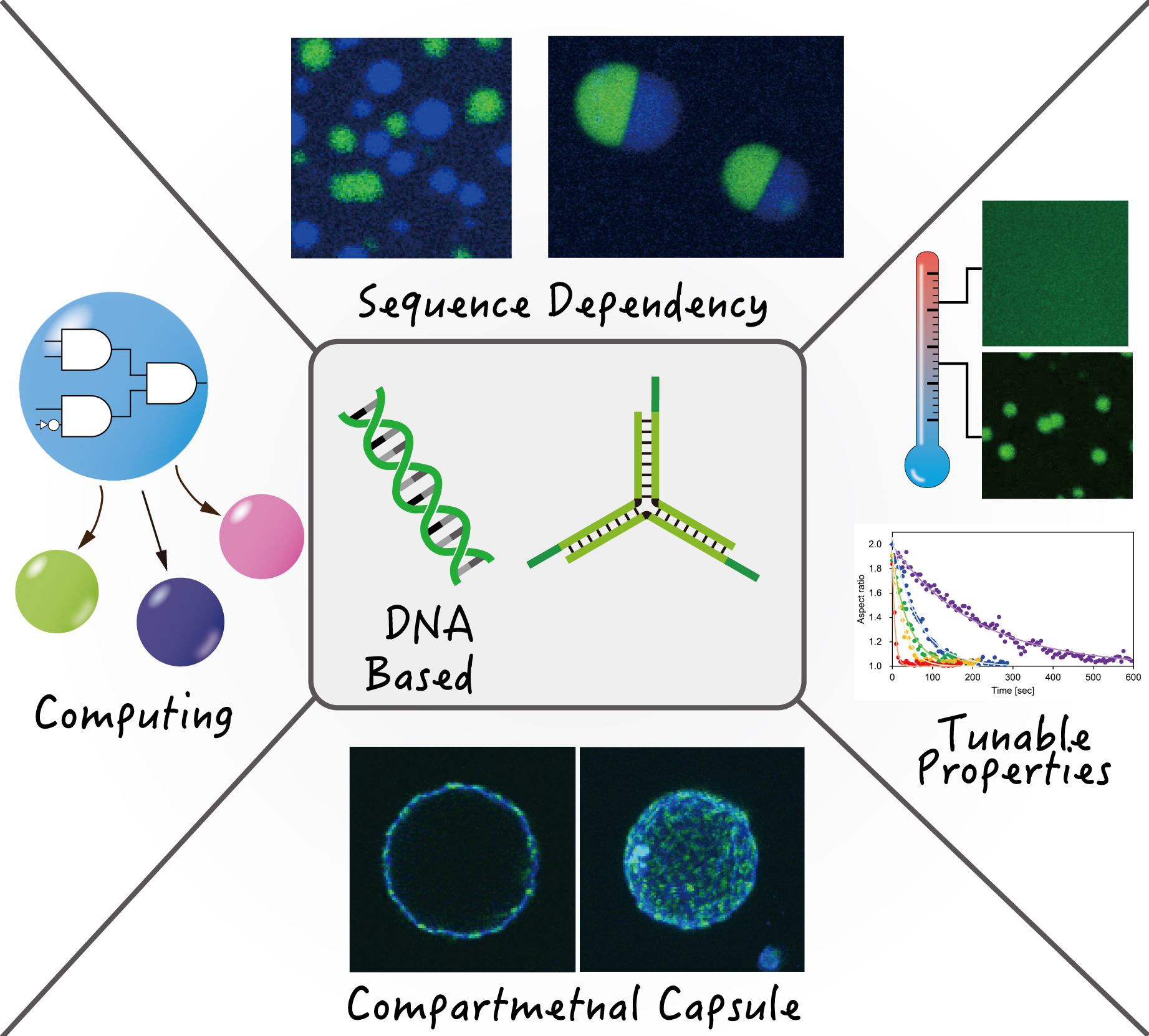1
"Pioneering artificial cell-like structures with DNA nanotechnology-based liquid-liquid phase separation" by Yusuke Sato, Masahiro Takinoue is published in BPPB as the J-STAGE Advance Publication.
2024 January 30 BPPB
A following article is published as the J-STAGE Advance Publication in "Biophysics and Physicobiology".
Yusuke Sato, Masahiro Takinoue
"Pioneering artificial cell-like structures with DNA nanotechnology-based liquid-liquid phase separation"
URL:https://doi.org/10.2142/biophysico.bppb-v21.0010
- Abstract
- Recent studies have revealed that liquid-liquid phase separation (LLPS) plays crucial roles in various cellular functions. Droplets formed via LLPS within cells, often referred to as membraneless organelles, serve to concentrate specific molecules, thus enhancing biochemical reactions. Artificial LLPS systems have been utilized to construct synthetic cell models, employing a range of synthetic molecules. LLPS systems based on DNA nanotechnology are particularly notable for their designable characteristics in droplet formation, dynamics, properties, and functionalities. This review surveys recent advancements in DNA-based LLPS systems, underscoring the programmability afforded by DNA’s base-pair specific interactions. We discuss the fundamentals of DNA droplet formation, including temperature-dependence and physical properties, along with the precise control achievable through sequence design. Attention is given to the phase separation of DNA nanostructures on two-dimensional closed interfaces, which results in spatial pattern formation at the interface. Furthermore, we spotlight the potential of DNA droplet computing for cancer diagnostics through specific microRNA pattern recognition. We envision that DNA-based LLPS presents a versatile platform for the exploration of cellular mimicry and opens innovative ways for the development of functional synthetic cells.





